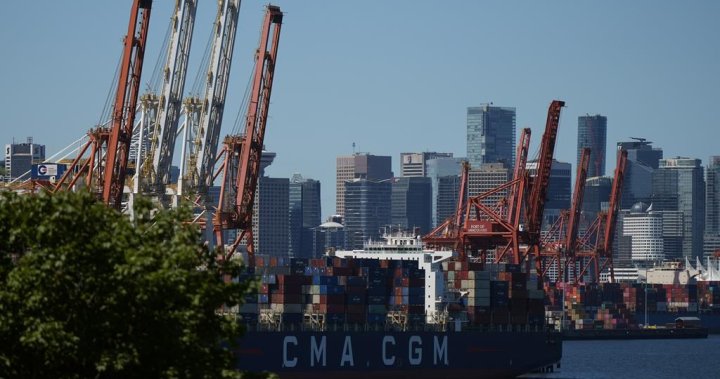Canadian exports of thermal coal have increased by seven percent, reaching the highest level in almost a decade. This comes as Canada is pushing to end the use of coal for power generation globally. Despite a promise made by the Liberals three years ago to stop all thermal coal exports by 2030, exports have actually risen by almost 20 percent since then. Statistics from the ports of Vancouver and Prince Rupert show that 19.5 million tonnes of thermal coal were exported through their terminals last year, which is nearly double the amount Canada exported in 2015 when the Liberals came to power. Fraser Thomson from Ecojustice believes that some companies are trying to sell off as much coal as possible before the ban takes effect.
Coal is widely considered to be the dirtiest fuel for generating electricity due to its high greenhouse gas emissions and air pollution. It produces almost double the amount of carbon dioxide compared to natural gas for the same amount of energy. Global coal consumption increased in 2022, partially due to a spike in gas prices following the Russian invasion of Ukraine. The International Energy Agency predicts that thermal coal demand may have peaked in 2023, with China accounting for over half of global thermal coal use and India close to 15 percent. Environment Minister Steven Guilbeault has announced plans to phase out coal exports later this year, while NDP MP Laurel Collins introduced a private member’s bill to end coal exports.
Canada and the United Kingdom initiated the Powering Past Coal Alliance to encourage nations to reduce their reliance on coal for power generation. Canada has significantly decreased its domestic use of coal, particularly with the closure of all coal-powered plants in Ontario by 2014. Alberta’s last two coal plants are transitioning to natural gas this year, and Saskatchewan, New Brunswick, and Nova Scotia are working towards closing or transitioning their coal plants by 2030. Despite these efforts, Canada continues to export thermal coal, with most of it coming from mines in Alberta and being shipped to Asia through ports in British Columbia.
The increase in Canadian coal exports comes at a time when there is a global push to reduce reliance on coal for power generation. While Canada has made significant progress in phasing out domestic coal use, there are concerns about the continued export of thermal coal, which is damaging to the environment due to its high carbon emissions and air pollution. It is unclear why the government has not taken action to address the rising coal exports, especially considering its commitment to ending the use of coal domestically and globally. As the world transitions to cleaner sources of energy, it is important for Canada to align its export policies with its climate goals to combat climate change effectively.
Despite promises to end thermal coal exports and reduce reliance on coal for power generation, Canada’s export of thermal coal has increased significantly in recent years. This contradicts the country’s efforts to phase out coal domestically and globally. With the lingering environmental impacts of coal use, it is imperative for Canada to take concrete steps to reduce and eventually eliminate the export of thermal coal. This will align the country’s actions with its commitment to combat climate change and transition to cleaner sources of energy. The government must prioritize the phasing out of thermal coal exports to uphold its environmental responsibilities and contribute to global efforts to reduce greenhouse gas emissions.















